(Beyond Pesticides, May 2, 2017) The Mexican long tongued bat is the pollinator of the month for May. The Mexican long tongued bat, scientific name Choeronycteris mexicana, is a species of bat aptly named for its tongue, which has the remarkable ability to extend to nearly a body length. It is less-commonly referred to as the hog-nosed bat.
Range
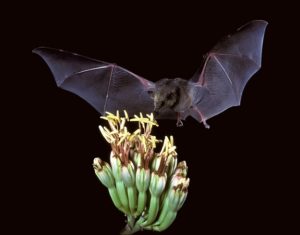 The Mexican long-tongued batâs range extends from the southwest of the United States through Mexico and into Central America, according to the International Union for Conservation of Nature (IUCN). In the United States, the bat is restricted to the far-south of California, Arizona, Nevada, New Mexico, and Texas. It is found in most areas of Mexico but is absent from the Yucatan peninsula and the gulf coast. Further south, the bat is also found in southern Guatemala and El Salvador in addition to northern Nicaragua. The Mexican long-tongued bat participates in seasonal migrations rather than hibernation. The Texas Parks and Wildlife Department admits that the study of the batâs migratory patterns has been inadequate. However, it is known that the females establish maternity roosts in the southwest of the United States in late spring. They and their young depart for Mexico and Central America with the onset of cold weather in October and November. There is some evidence that a few individuals will remain in warmer northern areas over the winter.
The Mexican long-tongued batâs range extends from the southwest of the United States through Mexico and into Central America, according to the International Union for Conservation of Nature (IUCN). In the United States, the bat is restricted to the far-south of California, Arizona, Nevada, New Mexico, and Texas. It is found in most areas of Mexico but is absent from the Yucatan peninsula and the gulf coast. Further south, the bat is also found in southern Guatemala and El Salvador in addition to northern Nicaragua. The Mexican long-tongued bat participates in seasonal migrations rather than hibernation. The Texas Parks and Wildlife Department admits that the study of the batâs migratory patterns has been inadequate. However, it is known that the females establish maternity roosts in the southwest of the United States in late spring. They and their young depart for Mexico and Central America with the onset of cold weather in October and November. There is some evidence that a few individuals will remain in warmer northern areas over the winter.
Diet and Pollination
Mexican long-tongued bats feed primarily on the nectar and pollen of night-blooming flowers. Favorites include agave and cacti. They are also known to eat cactus fruit as well as insects found on flowers and fruit where they feed. Their preferences for agave and cactus makes them an important pollinator as they carry pollen from one plant to another. The United States Department of Agriculture Forest Service notes that bats primarily pollinate large flowers that produce strong fragrance and large volumes of nectar. Over three-hundred species of fruit-bearing plants depend on the Mexican long-tongued bat and other bat species for pollination.
Physiology
The Mexican long-tongued bat belongs to the group of phyllostomid or âleaf nosedâ bats. These bats are characterized by a projection from the end of the nose that looks like a leaf. The Texas Parks and Wildlife Department advises that the Mexican long-tongued bat can be distinguished from other âleaf nosedâ bats by their short ears, narrow snout, and presence of a small tail. The Smithsonia Museum of Natural History notes that the nose leaf may help direct the batâs echolocation signals. The National Science Research Library at Texas Tech University describes the Mexican long-tongued bat as medium sized â between three and four inches in length and weighing less than a tenth of a pound â with sooty-gray to brown coloration. Their extendable, long, tapering, brush-tipped tongues allow them to access nectar from deep within a great variety of night-blooming flowers while hovering.
Ecological Role
The Mexican long-tongued bat plays a multifaceted ecological role as predator, prey, and pollinator. Their diet largely consists of agave nectar and they play a major role in the pollination of non-cultivated agave. While nectar and pollen are their primary food source, they also prey on any insects who are present when they are feeding at a flower. In addition to their role in pollination, the bats also contribute to the survival of cacti by dispersing their seeds. According to the food-web site, What Eats, bats play an ecological role as part of the diet of a number of predators. Predatory birds, like hawks and owls, in addition to snakes and predatory mammals are known to include bats among their prey.
The role of the Mexican long-tongued bat in pollination has been somewhat diminished by the expansion of agriculture in its range. According to a 2014 Wired article, cultivated agave is actively pruned to prevent flowering. These agave reproduce via proliferation of plantlets. The Mexican-long tongued bat and other bat species mentioned in the article do not play a primary role in producing commercial agave ânectar,â which is not floral nectar, but a synthetic syrup made from the sap of the agave plant. In fact, destruction of habitat to create commercial agave fields may actually be hurting the bat populations.
Threats to Existence
The International Union for Conservation of Natureâs Red List categorizes the Mexican long-tongued bat status as ânear threatened.â This means that the species is not currently endangered or vulnerable but is close to qualifying for those designations and is expected to move to a threatened category in the near future. The IUCN cites its wide range across North and Central America as an encouraging point but also cites concerns regarding the species dependence on fragile agave populations which are subject to infringement by livestock grazing and the practice of prescribed fires.
In addition to danger relating to the availability of agave, the Mexican long-tongued bat is subject to the threat of loss of roosting sites. The caves which harbor these bats are increasingly being invaded by miners and caving tourists which render the caves inhospitable. The Texas Parks and Wildlife Department clarifies that the bats are very sensitive and, when disturbed, will abandon their roost.
A recent study in Taiwan connected the use of imidacloprid, a neonicotinoid pesticide, to diminished ability to echolocate among bats. They found that bats who fed on insects exposed to imidacloprid developed difficulty travelling on established paths and frequently became lost while hunting. The researcher noted âWhen toxic substances accumulate to a certain level, they damage the bats’ neurons and destroy their echolocation system.â
Threats to bat species are particularly concerning because of their slow rate of reproduction. Bat mothers only give birth to a single pup each year. This renders bat populations particularly vulnerable to factors that might disturb food sources or prevent successful migration during mating season.
How to Protect the Species
Mexican long-tongued bats live in a range of environments including scrub and saguaro desert, deciduous, pine, and oak forests, and canyons. Preservation of these habitats as well as food sources is imperative to protect the future of the Mexican long-tongued bat. Similarly, insisting on habitat preservation and personally fostering food sources for your local bats is necessary to protect your regions species. Even if the Mexican long-tongued batâs range doesnât reach your region, there are many other species of bats who act as beneficial pollinators. Consult these species profiles to determine which bats contribute to pollination in your area.
It is also critical to avoid planting any seeds or flowers that have been coated in pollinator-toxic neonicotinoids. As established in the aforementioned study which linked imidacloprid to loss of ability to echolocate in bats, these chemicals can undermine your intent to provide habitat for wild pollinators. See Beyond Pesticidesâ Pollinator Friendly Seed and Nursery Directory to source safe seeds. For more information, see the webpage on Managing Landscapes with Pollinators in Mind. You can also get active in your community to protect these pollinators by holding native planting days in the spring, and advocating for changes to community pesticide policies.
In addition to actively opposing destruction of habitat and food sources, you can provide personal support to local bat populations. One option is to install a bat house on your property. You can build your bat house yourself or order one online to provide non-traditional habitat for your regionâs species.
Further, Mexican long-tongued bats and other bat species have been known to visit hummingbird feeders. If you do host a number of local species at your hummingbird feeder, refer to this recipe, endorsed by the Smithsonianâs National Zoo, to ensure the health of hummingbirds and bats alike. Make sure to use organic sugar to avoid exposing visitors to unnecessary pesticides. The Texas Parks and Wildlife Department supports the use of feeders to support bats which arrive too early in spring or which remain through the winter. However, they also note that sugar water, while helpful sustenance, will not support long-term survival of bats because it lacks important nutrients.
It is important to educate others to dispel the myths surrounding bats in your community. Bats are an important part of local ecosystems and play a large role in pollination and control of insect populations. There are only three species of bats feeding primarily on blood. These species are not found in the United States but have created a widespread fear around the larger 1,200 species order. Another myth is that bats are a common carrier of rabies. Bats, like all mammals, are capable of carrying rabies. However, infection is not widespread and the odds of a bat exposing you to rabies are very low. Know that individual bats who are active during daylight hours and those who are not disturbed when approached by humans are more likely to be infected. Remember, bats are wild animals and should only be handled by trained professionals. The organization Bat Conservation International has more information on bat myths here.
Citations
Chen, Chi-chung and Elizabeth Hsu, Research finds pesticide impairs echolocation ability in bats http://focustaiwan.tw/news/asoc/201701110013.aspx
GodĂnez-Alvarez, H., Valiente-Banuet, A. and Rojas-MartĂnez, A., 2002. The role of seed dispersers in the population dynamics of the columnar cactus Neobuxbaumia tetetzo. Ecology, 83(9), pp.2617-2629.International Union for Conservation of Nature, Redlist of Threatened Species: Choeronycteris mexicana   http://www.iucnredlist.org/details/4776/0
Pearson, Gwen, Tequila, Booze, and Bats https://www.wired.com/2014/06/tequila-booze-and-bats/
Smithsonian National Museum of Natural History, North American Mammals: Choeronycteris mexicana https://naturalhistory.si.edu/mna/image_info.cfm?species_id=43
Texas Parks and Wildlife Department, Mexican Long-tongued Bat http://tpwd.texas.gov/huntwild/wild/species/mexlong/
Texas Tech University, National Science Research Library, Mexican Long-tongued Bat http://www.nsrl.ttu.edu/tmot1/choemexi.htm
USDA Forest Service, Bat Pollination https://www.fs.fed.us/wildflowers/pollinators/animals/bats.shtml
What Eats, What Eats a Bat? http://www.whateats.com/what-eats-a-bat
Winter, Y. and von Helversen, O., 2003. Operational tongue length in phyllostomid nectar-feeding bats. Journal of mammalogy, 84(3), pp.886-896.
All unattributed positions and opinions in this piece are those of Beyond Pesticides.Â










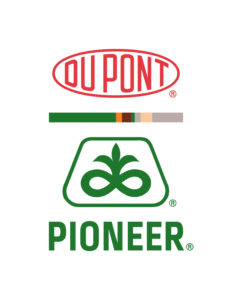 In
In 

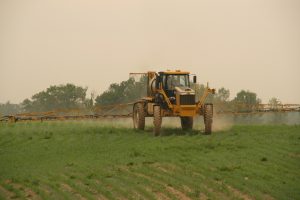
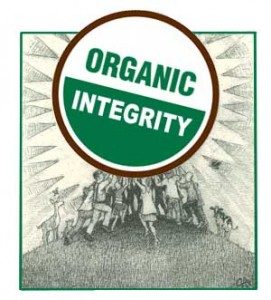 rn and soybeans that are largely fed to livestock whose products are sold as âorganicââ are the focus of
rn and soybeans that are largely fed to livestock whose products are sold as âorganicââ are the focus of 
 The study, published in
The study, published in 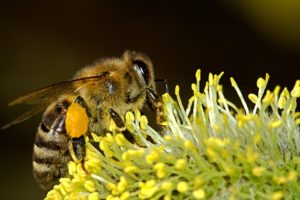
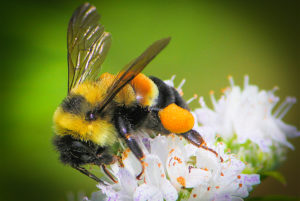
 The Mexican long-tongued batâs range extends from the southwest of the United States through Mexico and into Central America, according to the International
The Mexican long-tongued batâs range extends from the southwest of the United States through Mexico and into Central America, according to the International 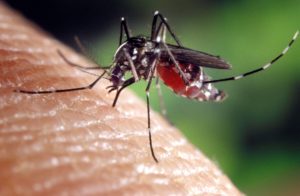 The trial is the second U.S. test conducted with the naturally occurring Wolbachia bacteria in Aedes aegypti mosquitoes, developed by the Kentucky-based company MosquitoMate. The first test occurred in Clovis, California, last year. In September 2016, the U.S. Environmental Protection Agency (EPA), which registers mosquito control products, approved and expanded an
The trial is the second U.S. test conducted with the naturally occurring Wolbachia bacteria in Aedes aegypti mosquitoes, developed by the Kentucky-based company MosquitoMate. The first test occurred in Clovis, California, last year. In September 2016, the U.S. Environmental Protection Agency (EPA), which registers mosquito control products, approved and expanded an 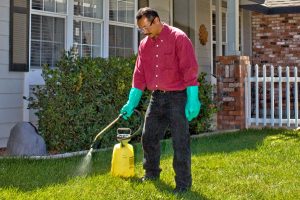 Nine organizations filed an
Nine organizations filed an 
